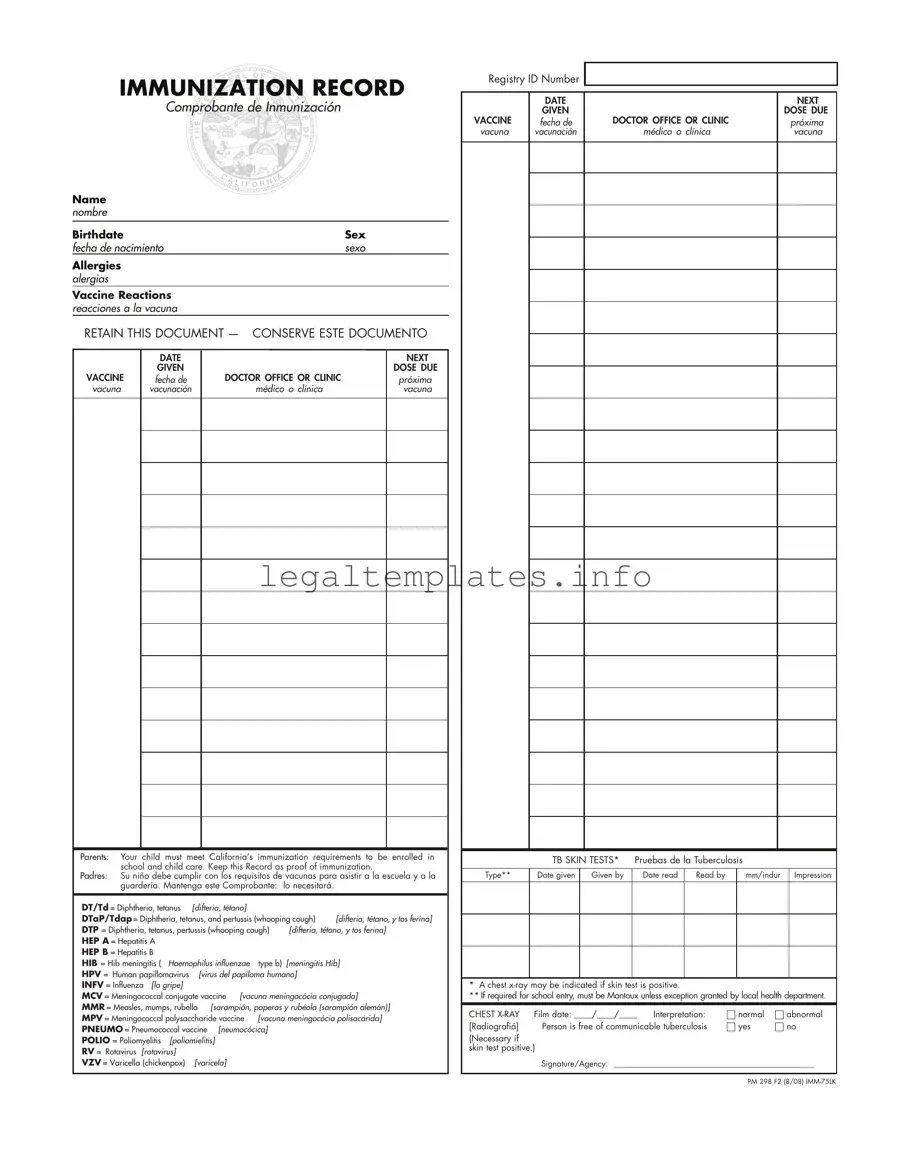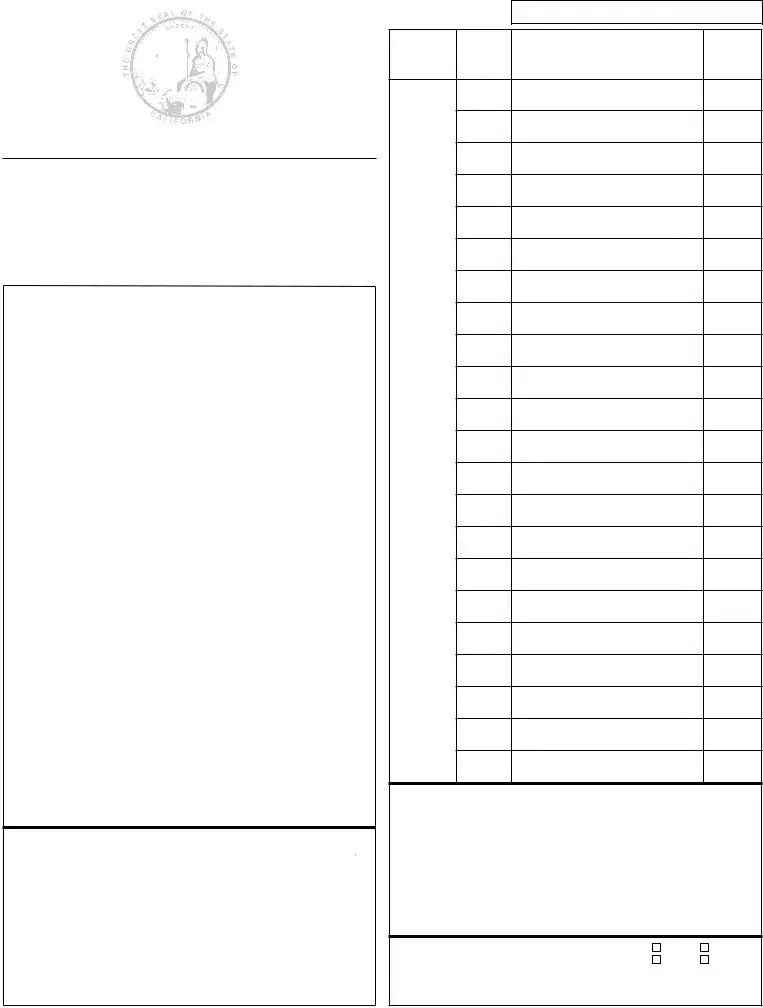What is an Immunization Record form?
An Immunization Record form is a document used to keep track of all the vaccines that an individual has received. It includes information such as the name of the vaccine, the date it was given, and the doctor's office or clinic where it was administered. Parents are advised to retain this document as proof of immunization for their child's enrollment in school and child care.
Why do I need to keep this document?
Having a complete Immunization Record is essential for a few reasons. Firstly, it provides a history of all the vaccinations received, which is crucial for ensuring that an individual is up to date with their immunizations and protected against certain diseases. Secondly, in many states, including California, proof of immunization is required for children to enroll in school and child care facilities.
What vaccines are listed on the Immunization Record?
The Immunization Record covers a comprehensive list of vaccines including, but not limited to, Diphtheria, Tetanus, Pertussis (whooping cough), Hepatitis A and B, Hib meningitis, Human papillomavirus, Influenza, Meningococcal vaccines, Measles, Mumps, Rubella, Pneumococcal, Poliomyelitis, Rotavirus, and Varicella (chickenpox).
What should I do if there is a reaction to a vaccine?
If an individual experiences a reaction to a vaccine, it is important to report this information to the healthcare provider who administered the vaccine. Ensure that such events are documented in the Immunization Record form under the section titled "Vaccine Reactions." This information is crucial for healthcare providers to make informed decisions about future vaccinations and potential medical interventions.
What are TB skin tests, and why are they included on the form?
TB skin tests are used to determine if someone has been infected with the tuberculosis bacteria. The inclusion of TB skin test results on the Immunization Record form is significant, especially for school entry requirements. A positive result might necessitate a chest x-ray to confirm the absence of active tuberculosis disease. It ensures the individual does not pose a risk of spreading tuberculosis in a school or childcare environment.
How do I update the Immunization Record?
To update the Immunization Record, bring the document to each vaccine appointment. The healthcare provider administering the vaccine should record the details of the vaccination, including the date, the vaccine given, and their signature or clinic's stamp. Regular updates ensure the record accurately reflects an individual's immunization status.
Is it necessary to have a signature from a healthcare provider on the form?
Yes, having a signature or a stamp from the healthcare provider who administered the vaccine is an essential part of the Immunization Record. It serves as a verification of the vaccine administered, ensuring the document's authenticity, particularly when the record is used for school or childcare enrollment.
What if my child is exempt from certain vaccinations?
If your child is exempt from certain vaccinations due to medical, religious, or philosophical reasons, it's important to document these exemptions in the Immunization Record. Additionally, ensure that you have the proper documentation as required by your state or local health department to support these exemptions when enrolling your child in school or child care.

